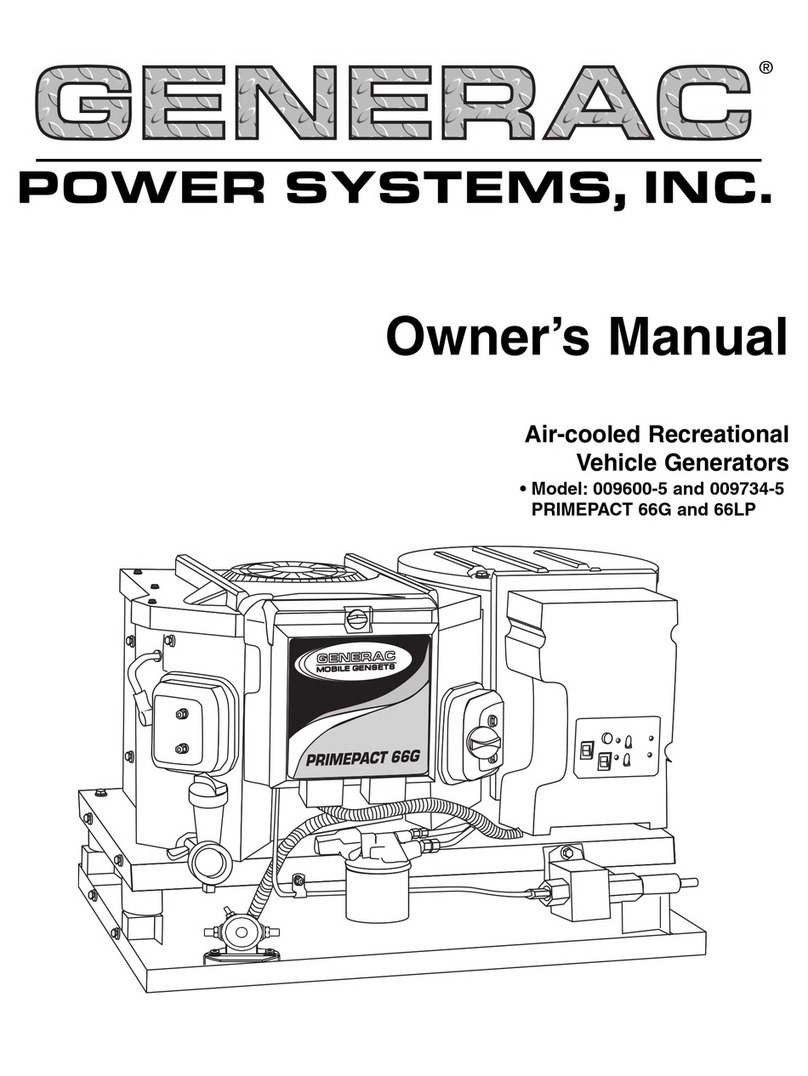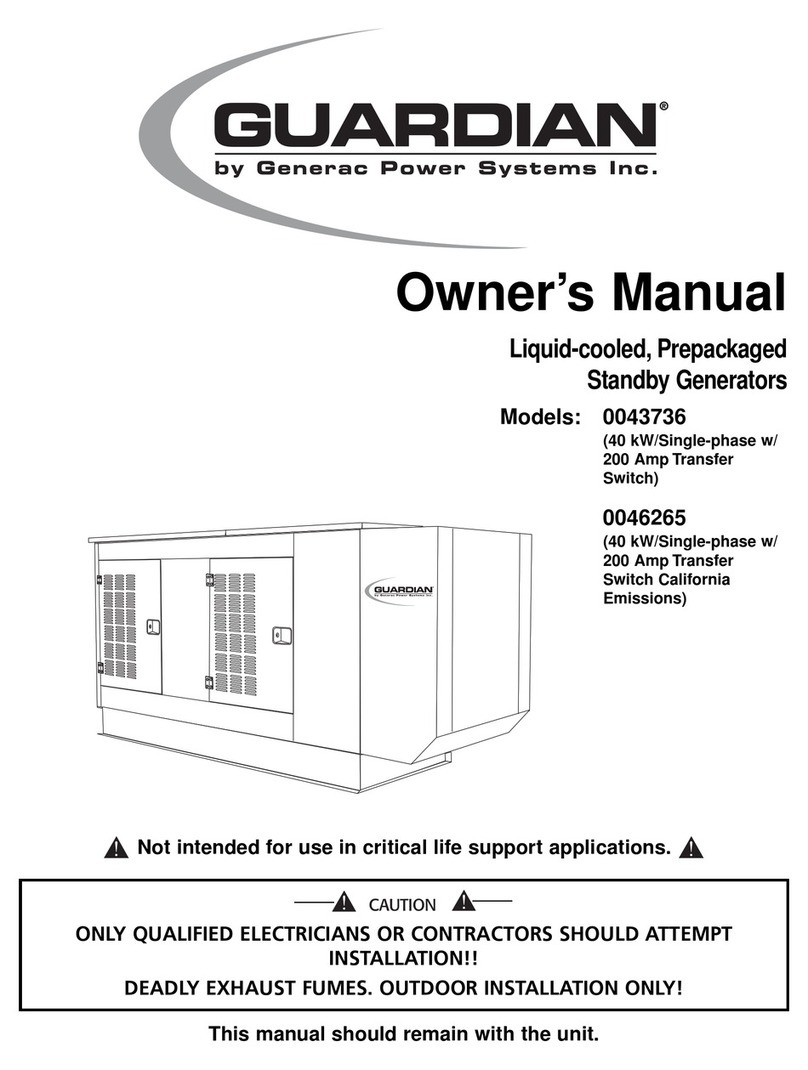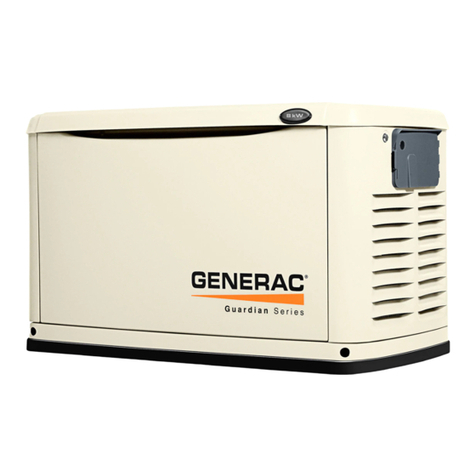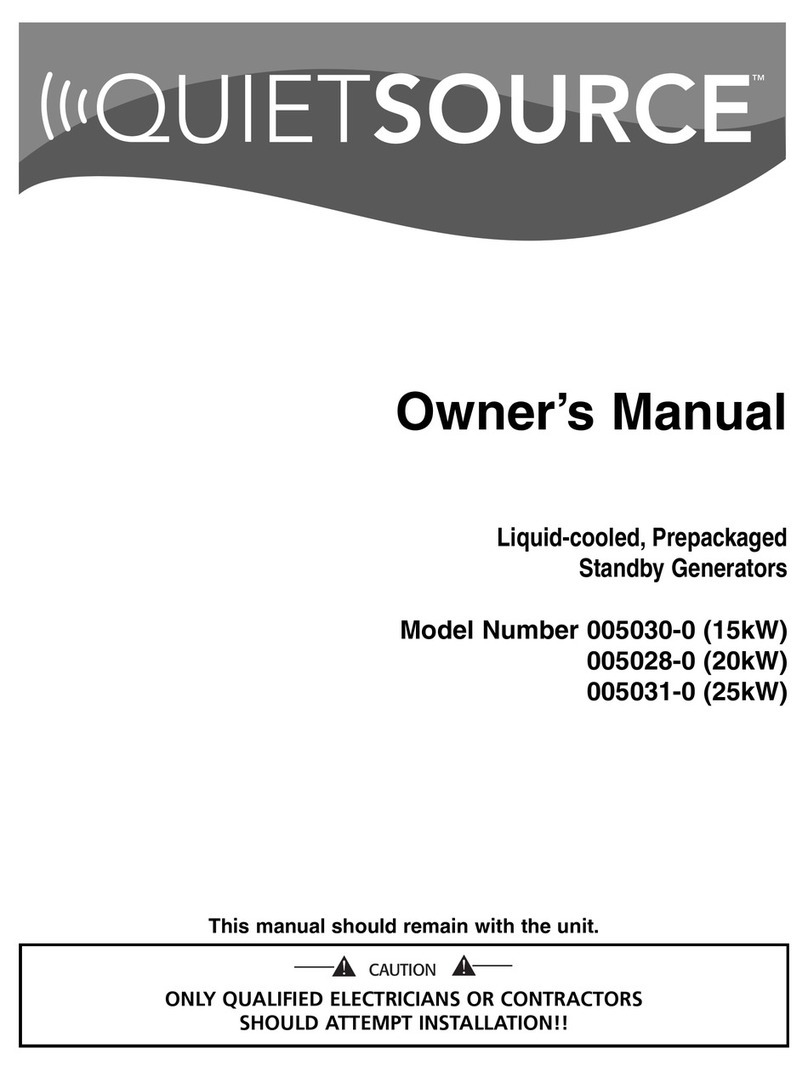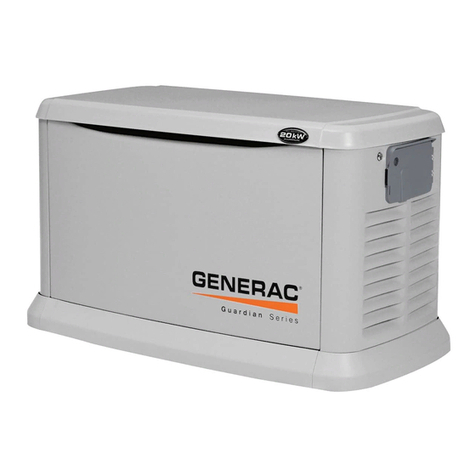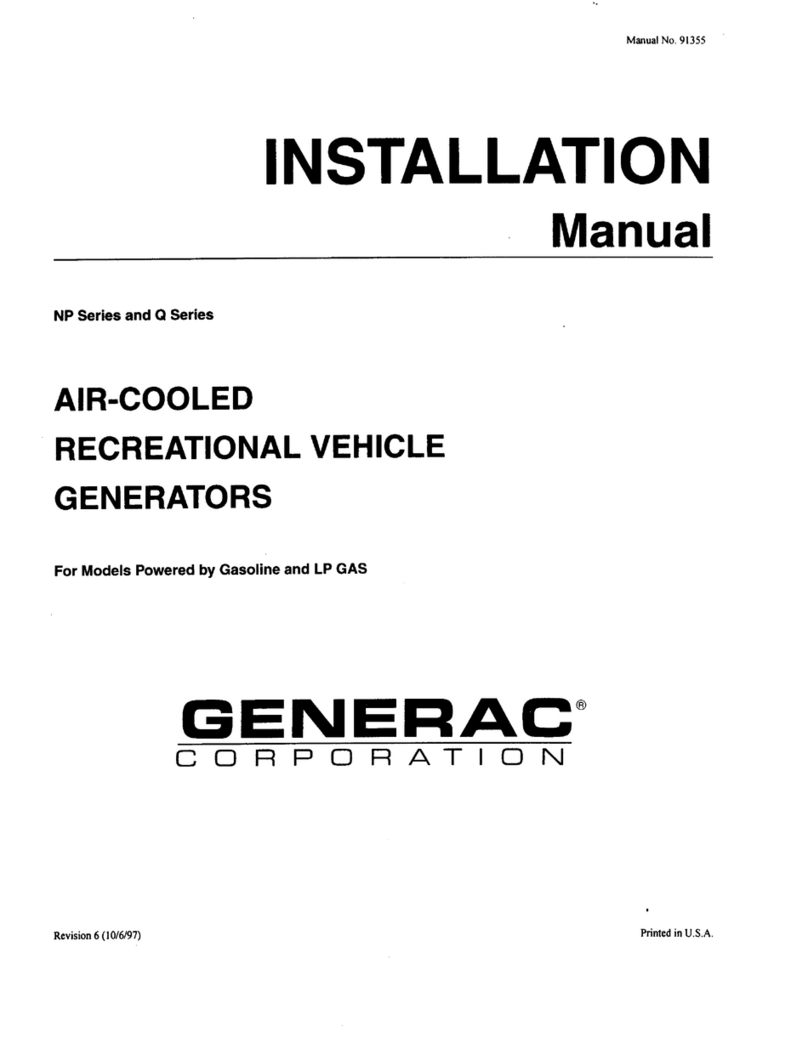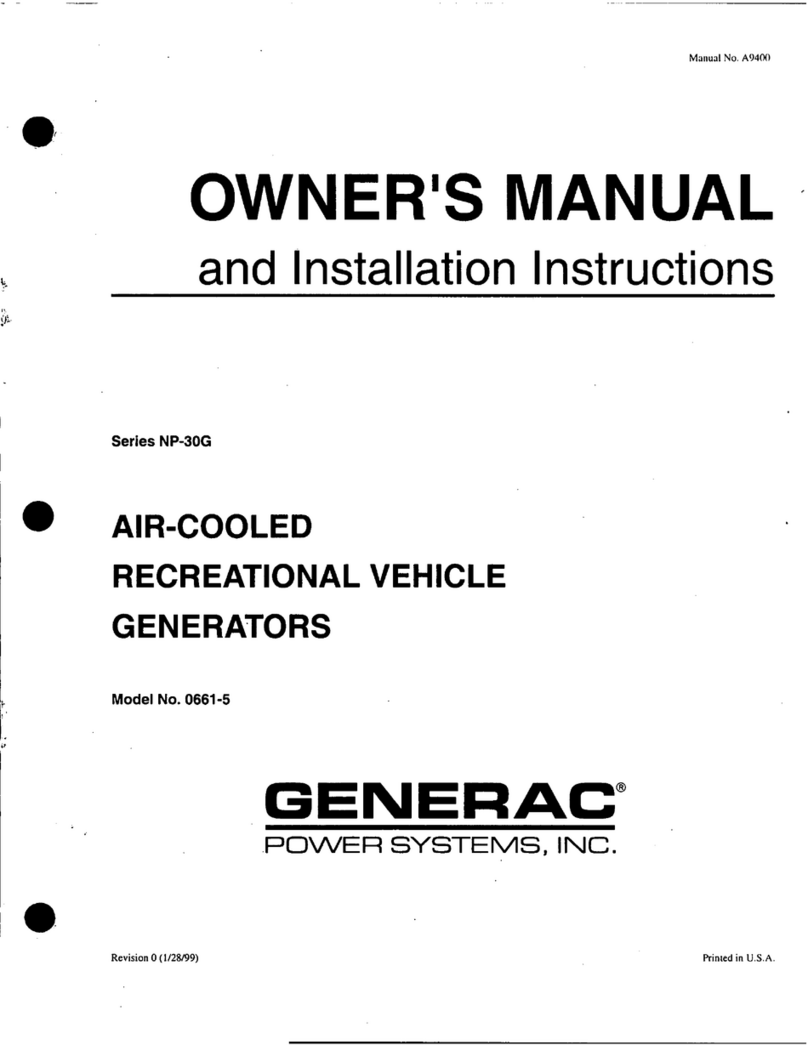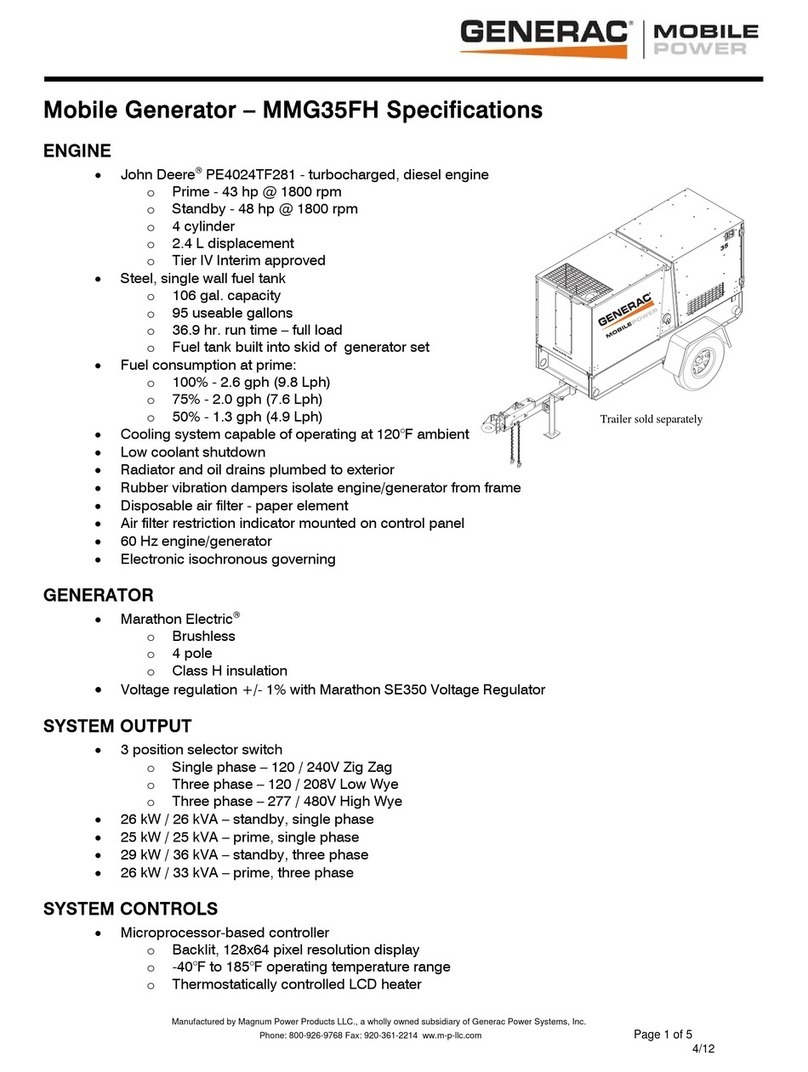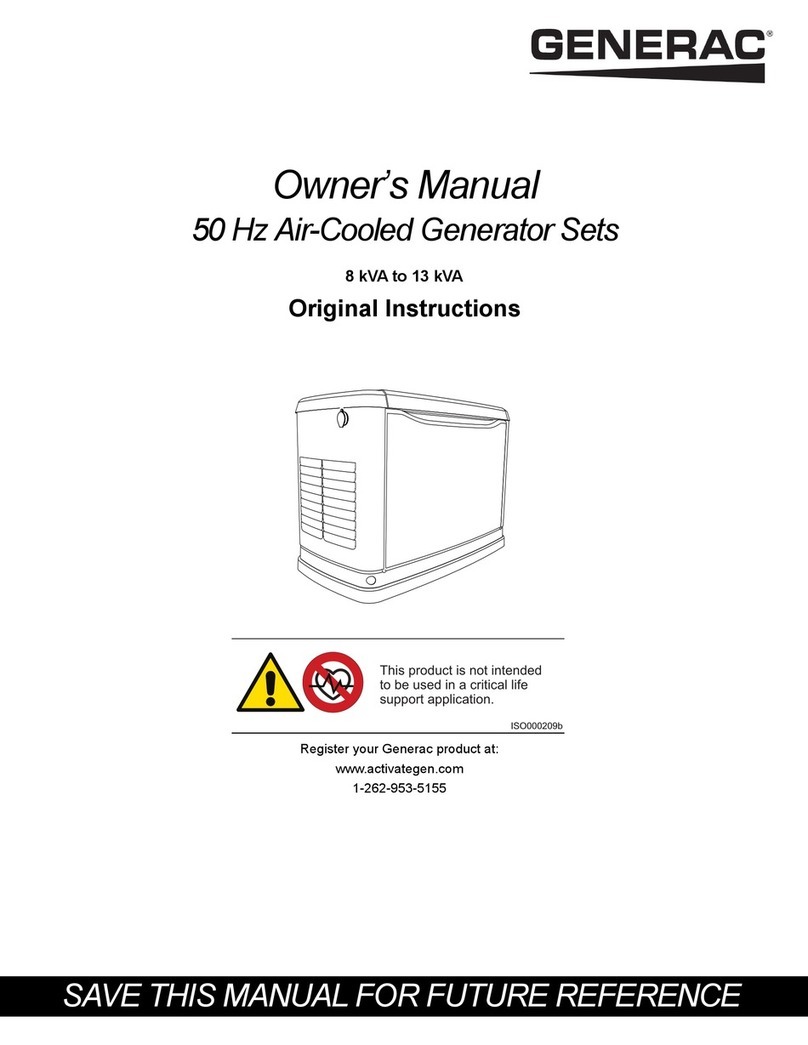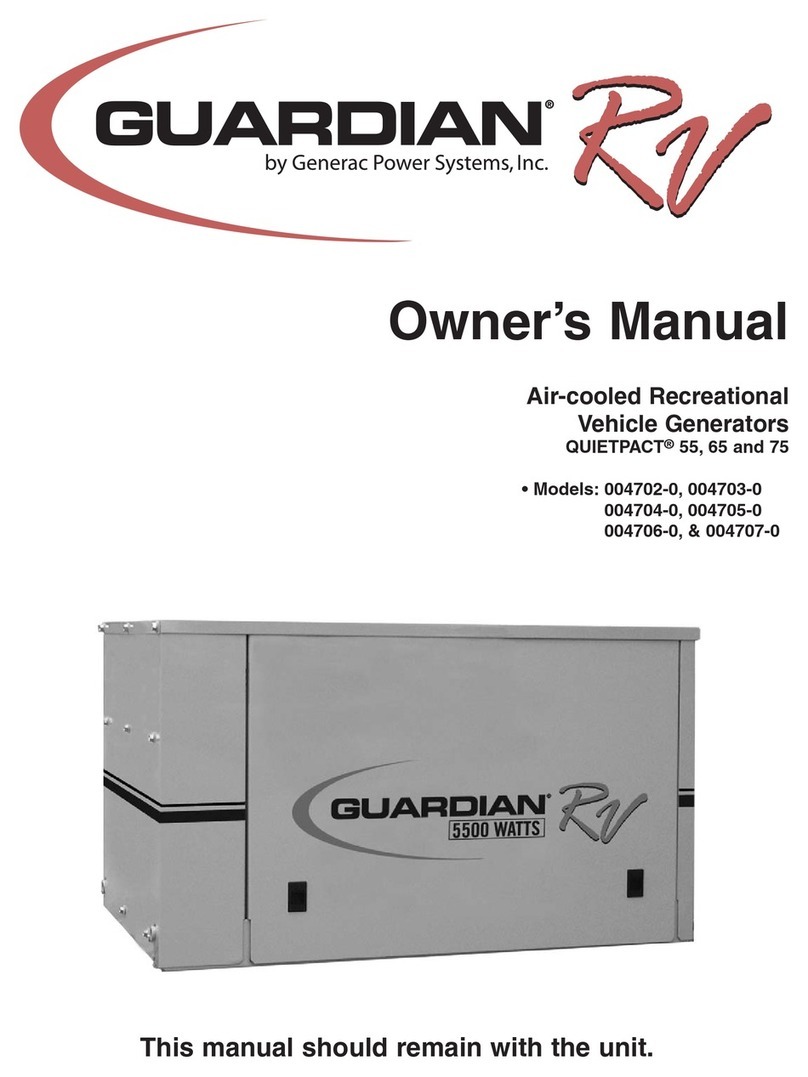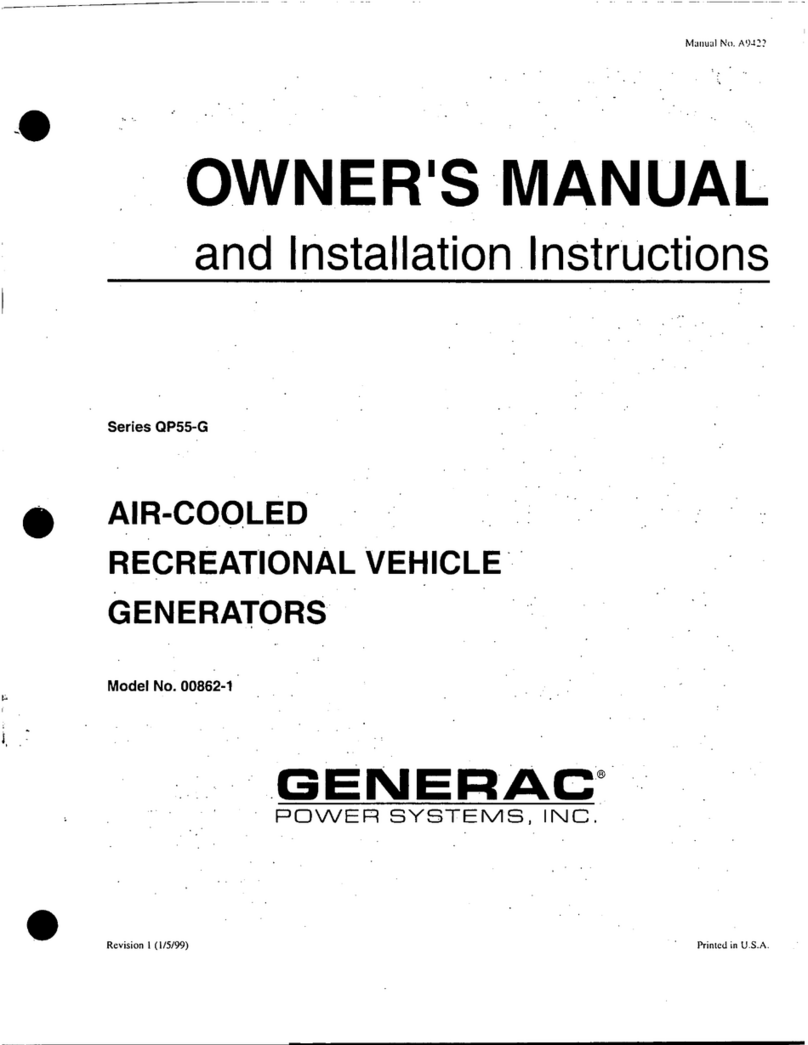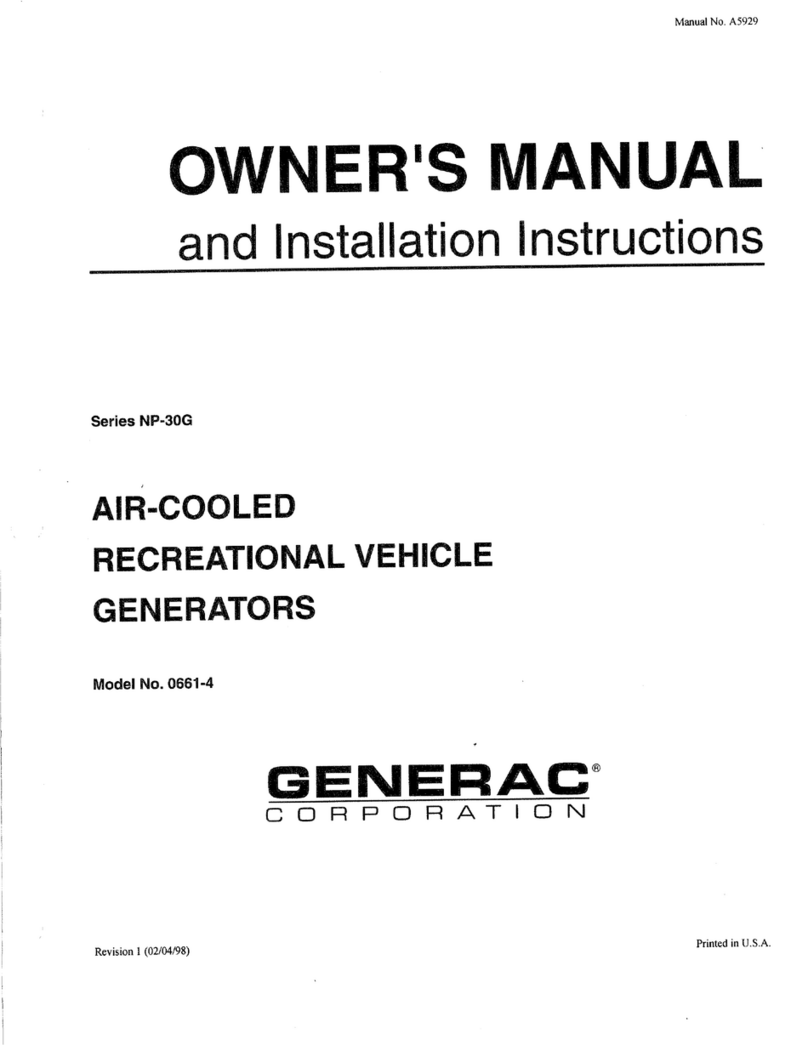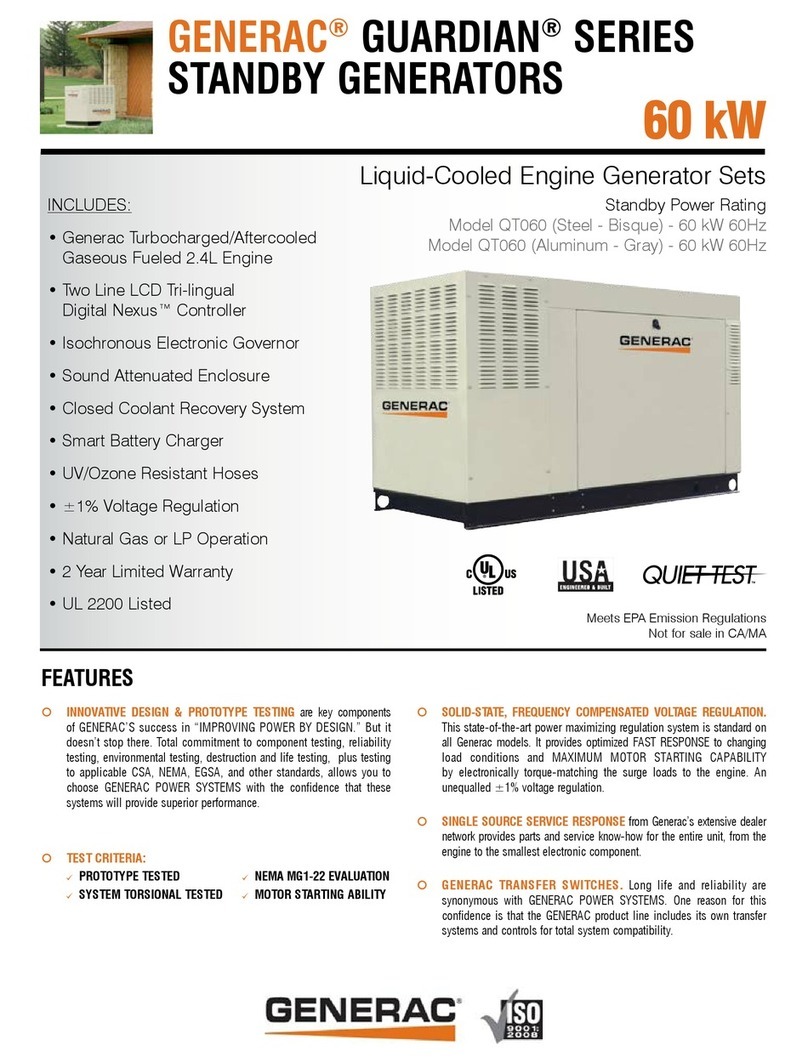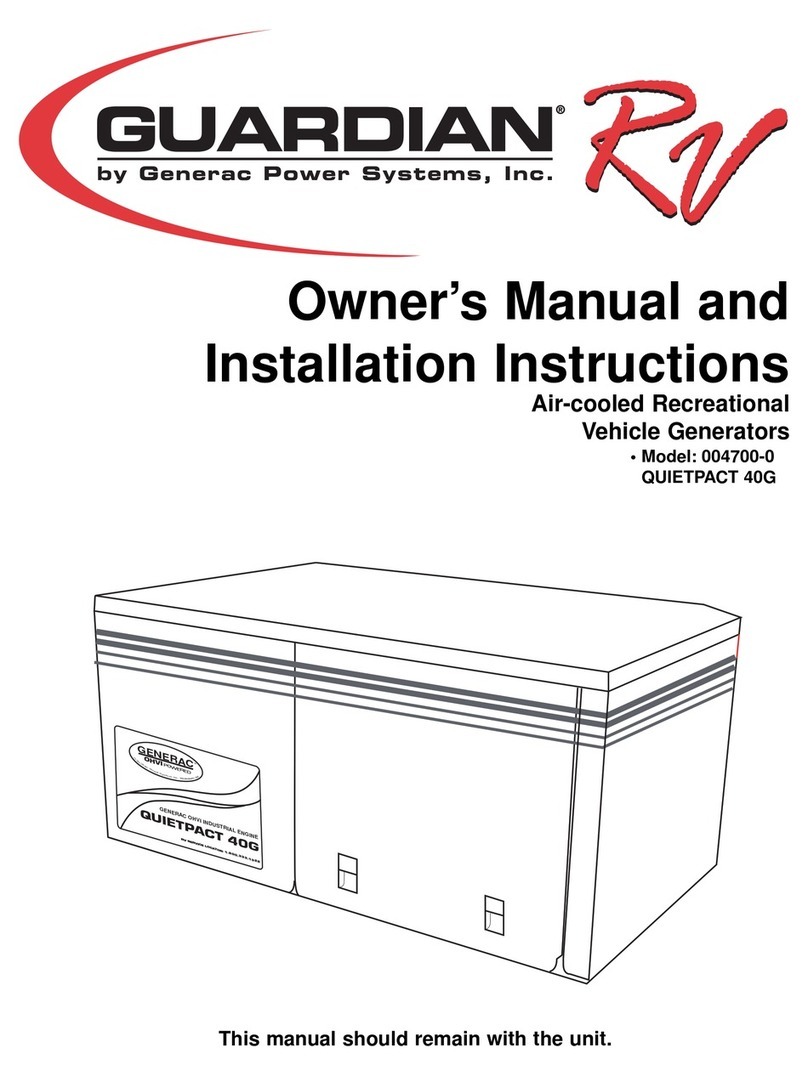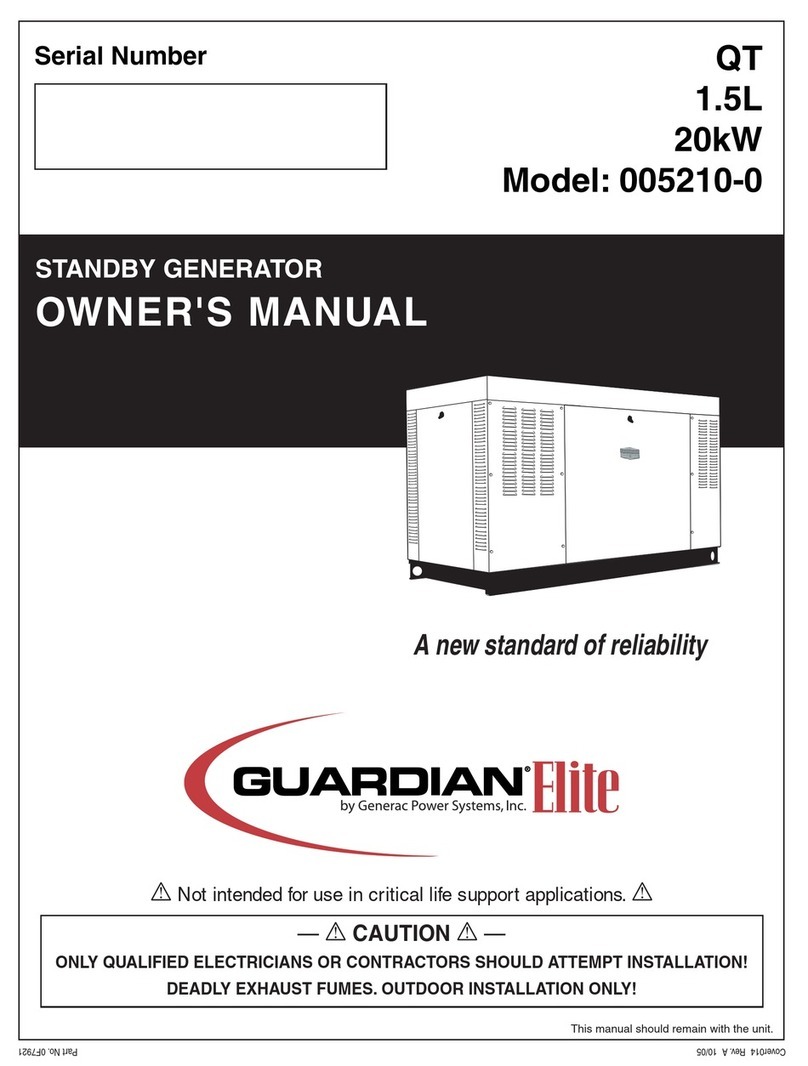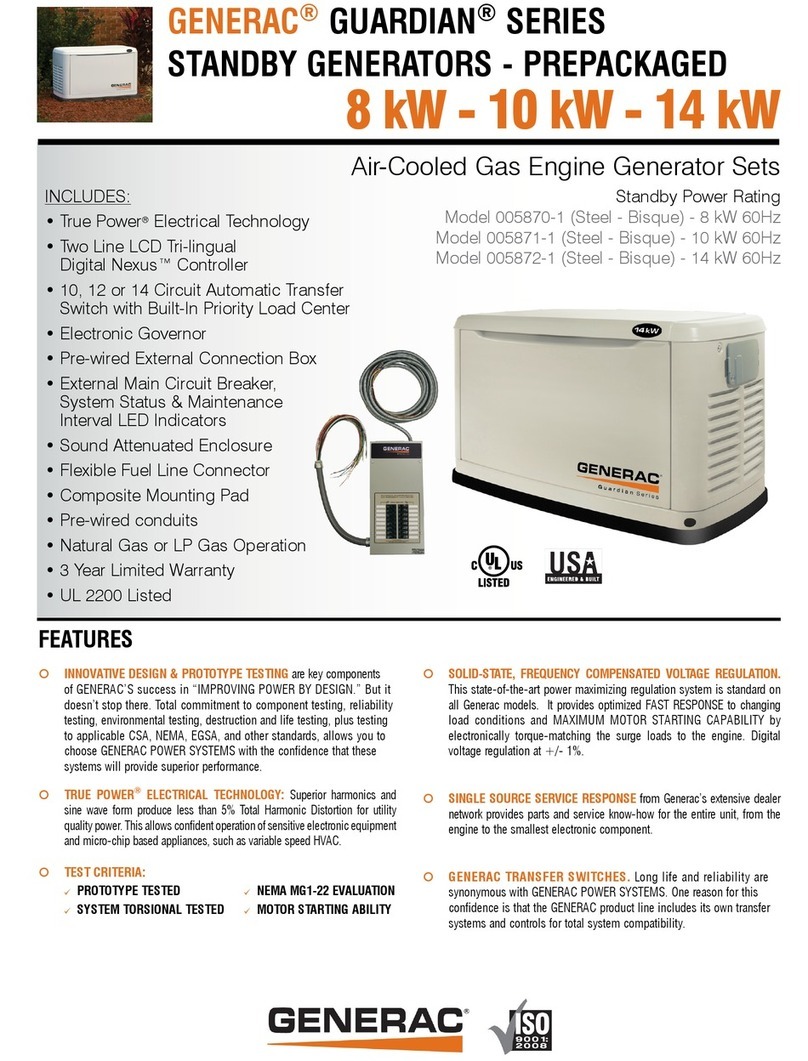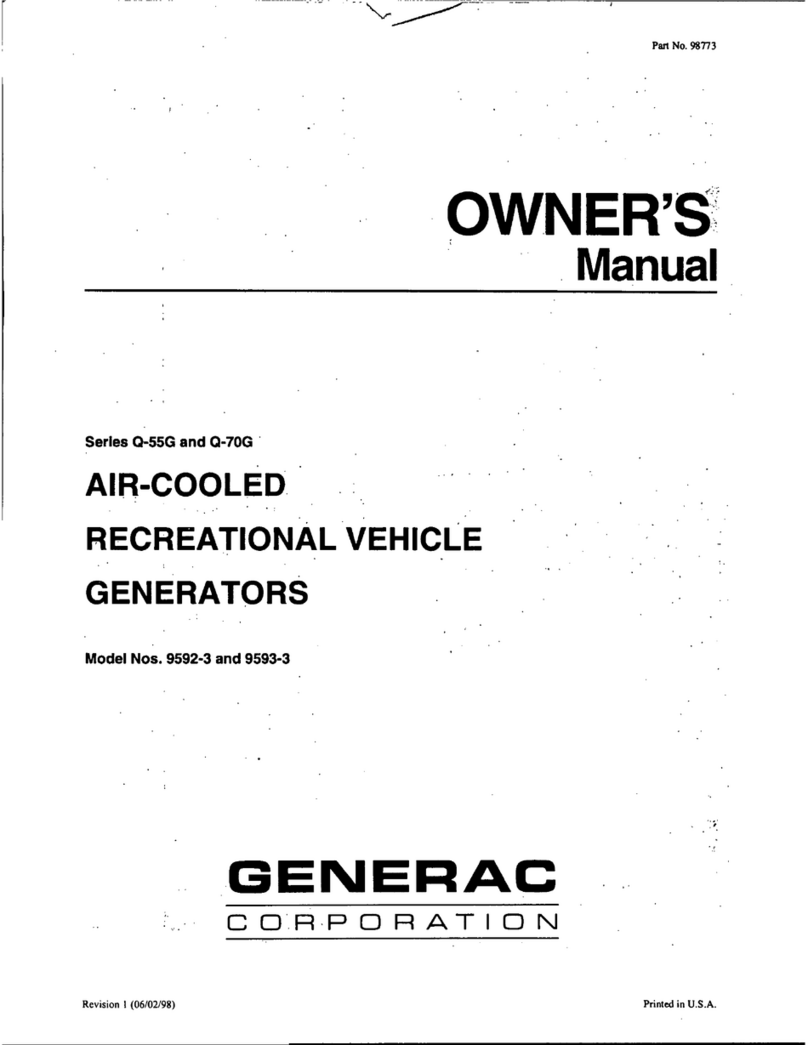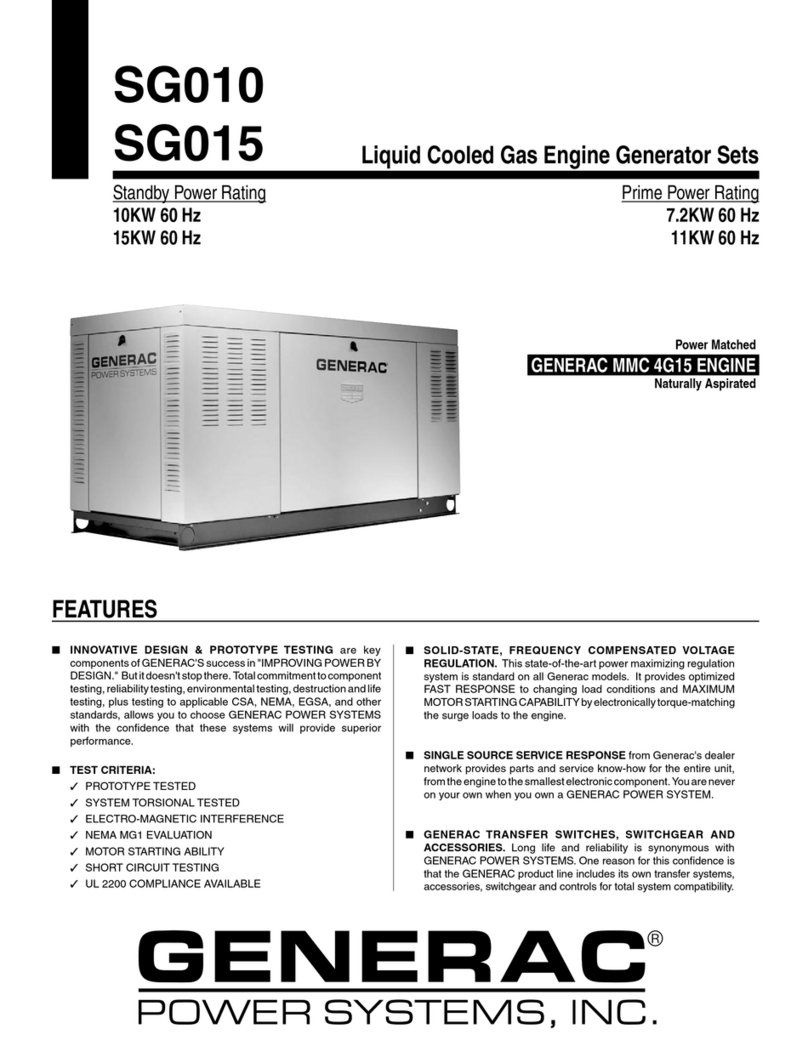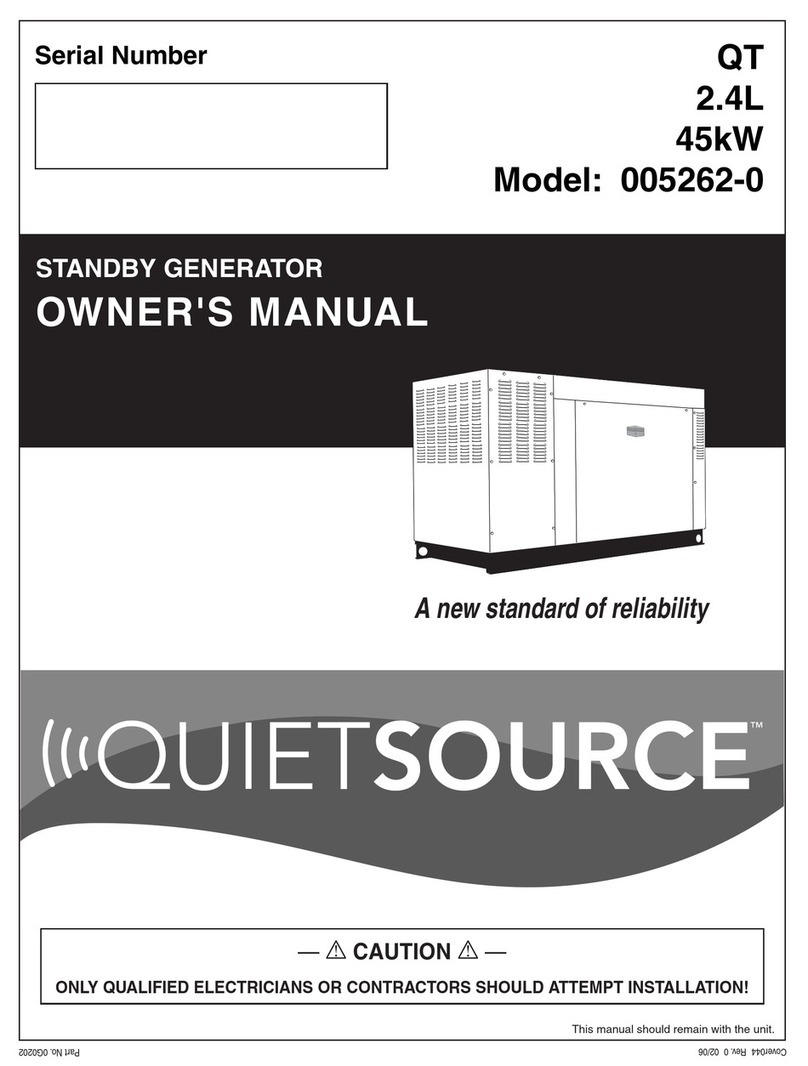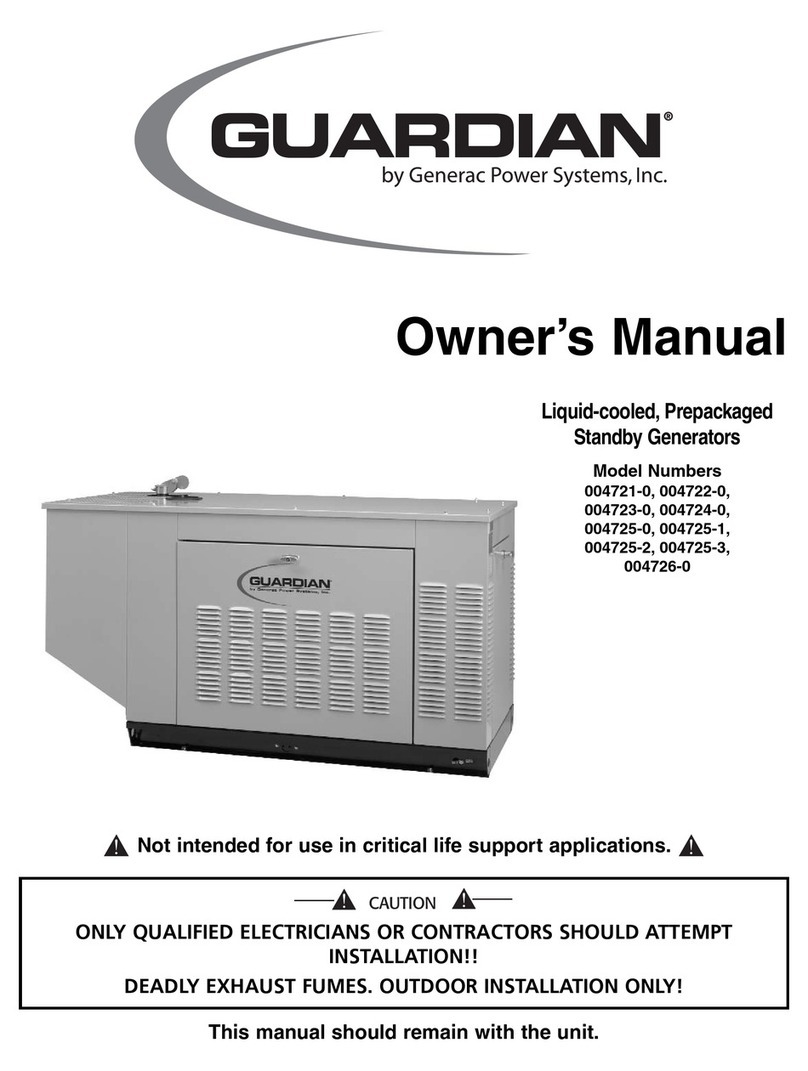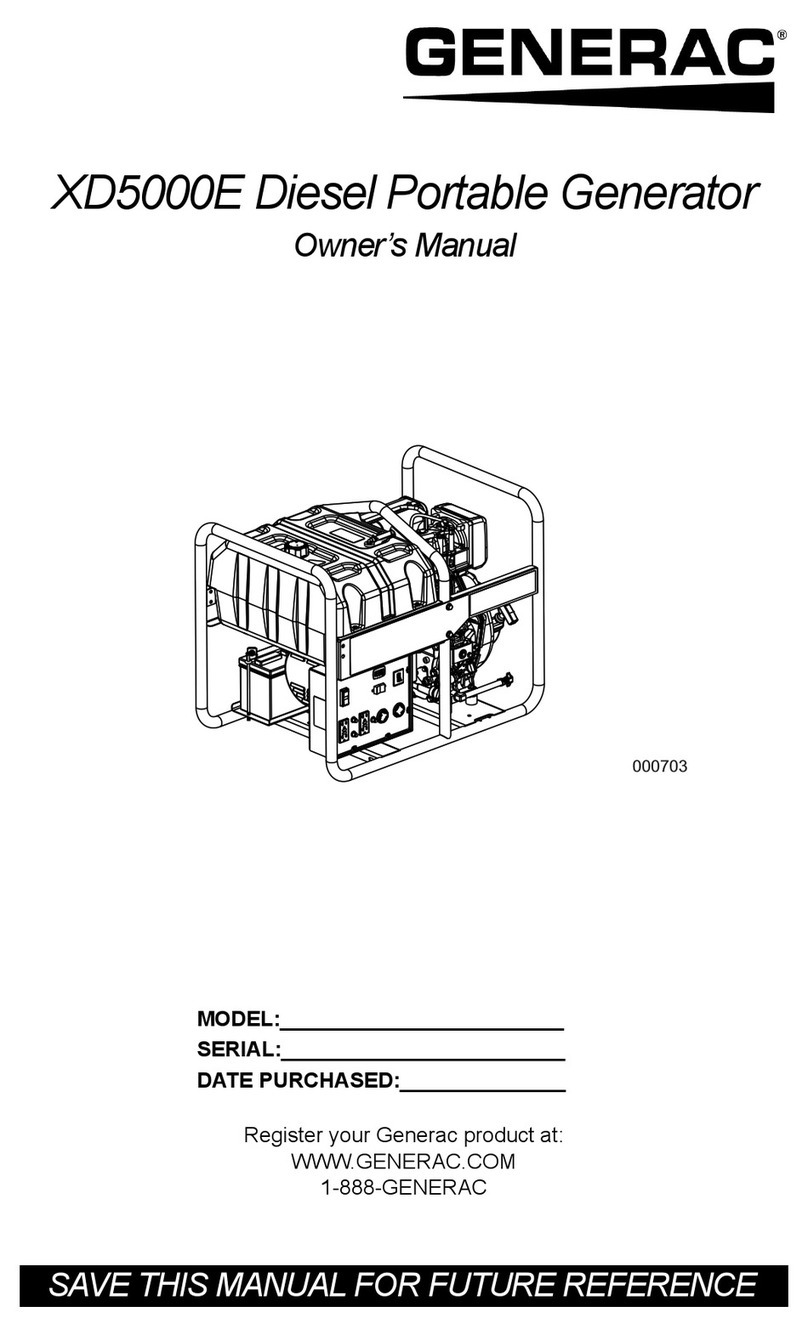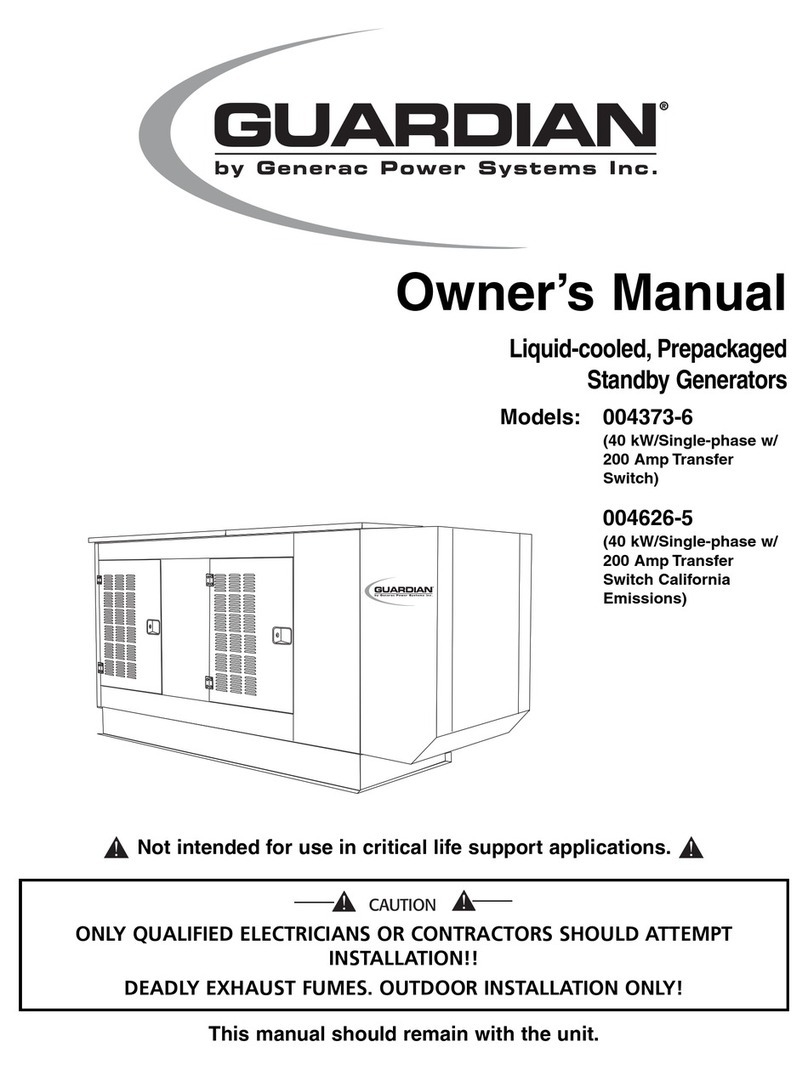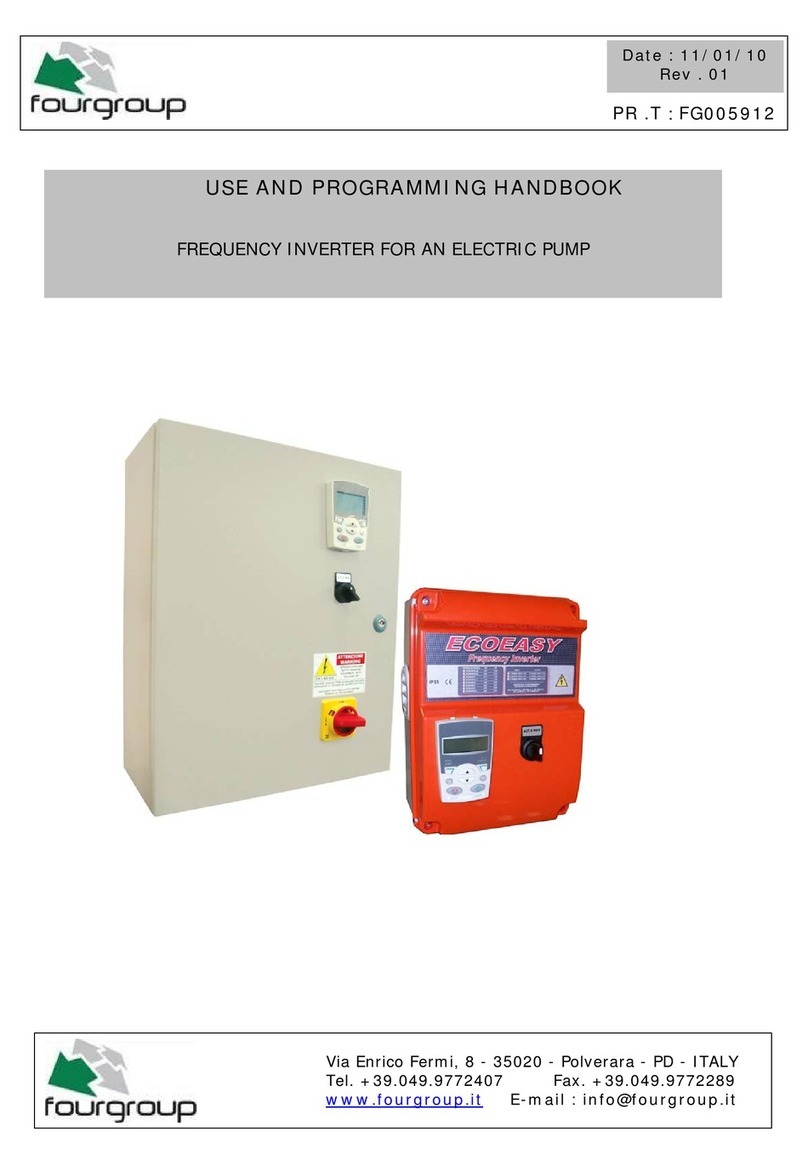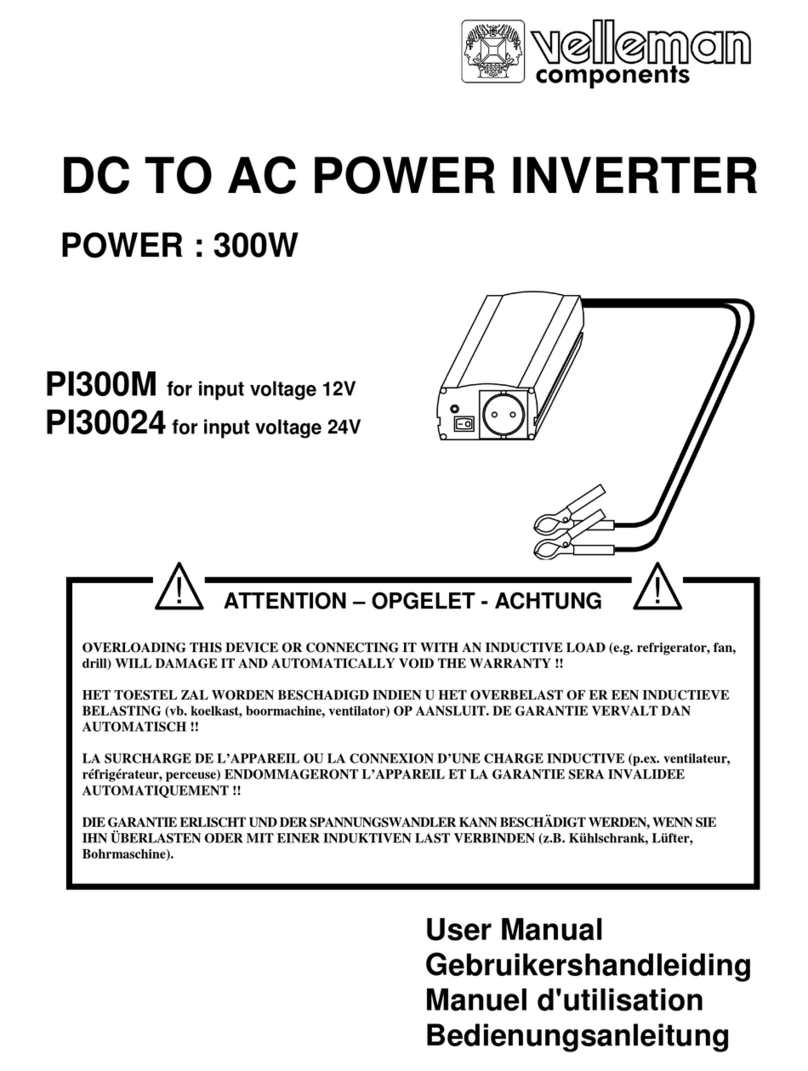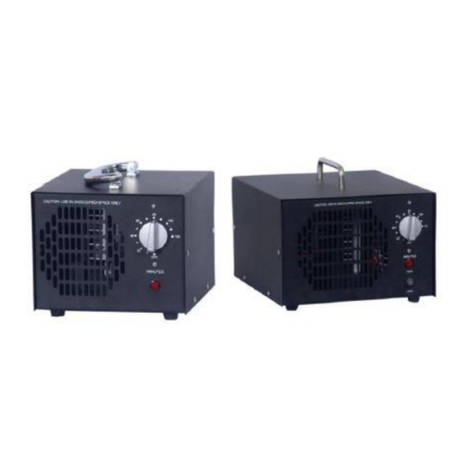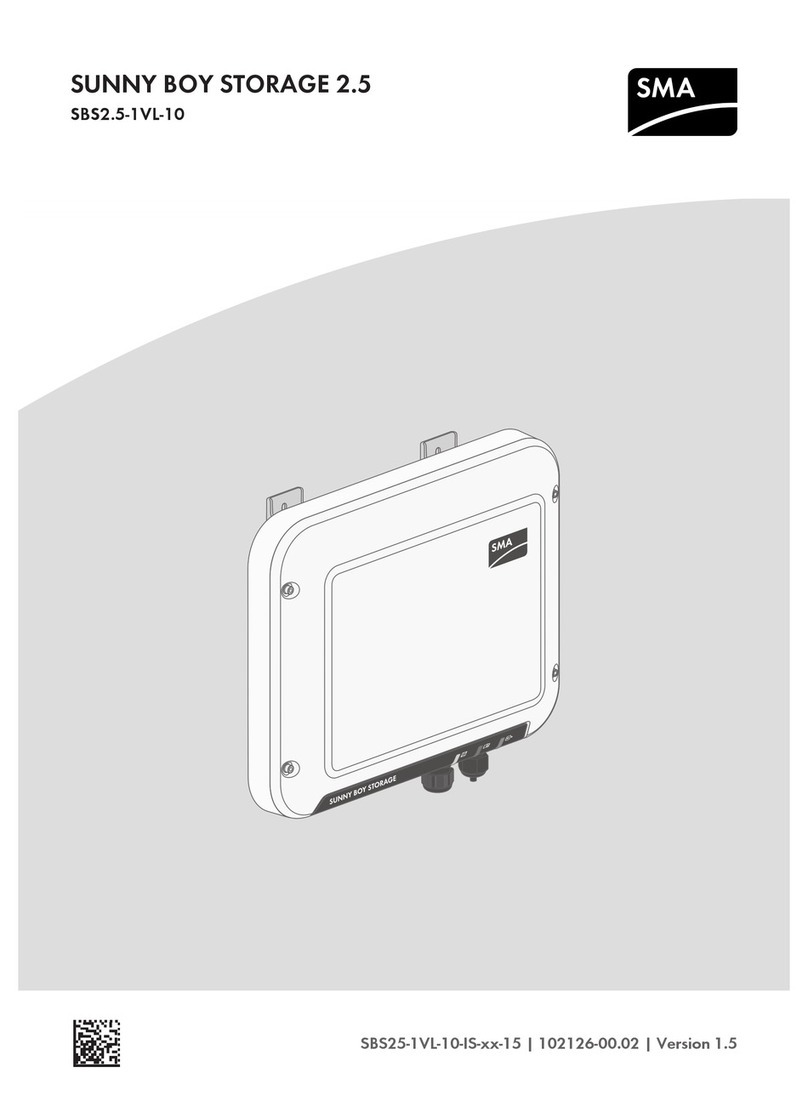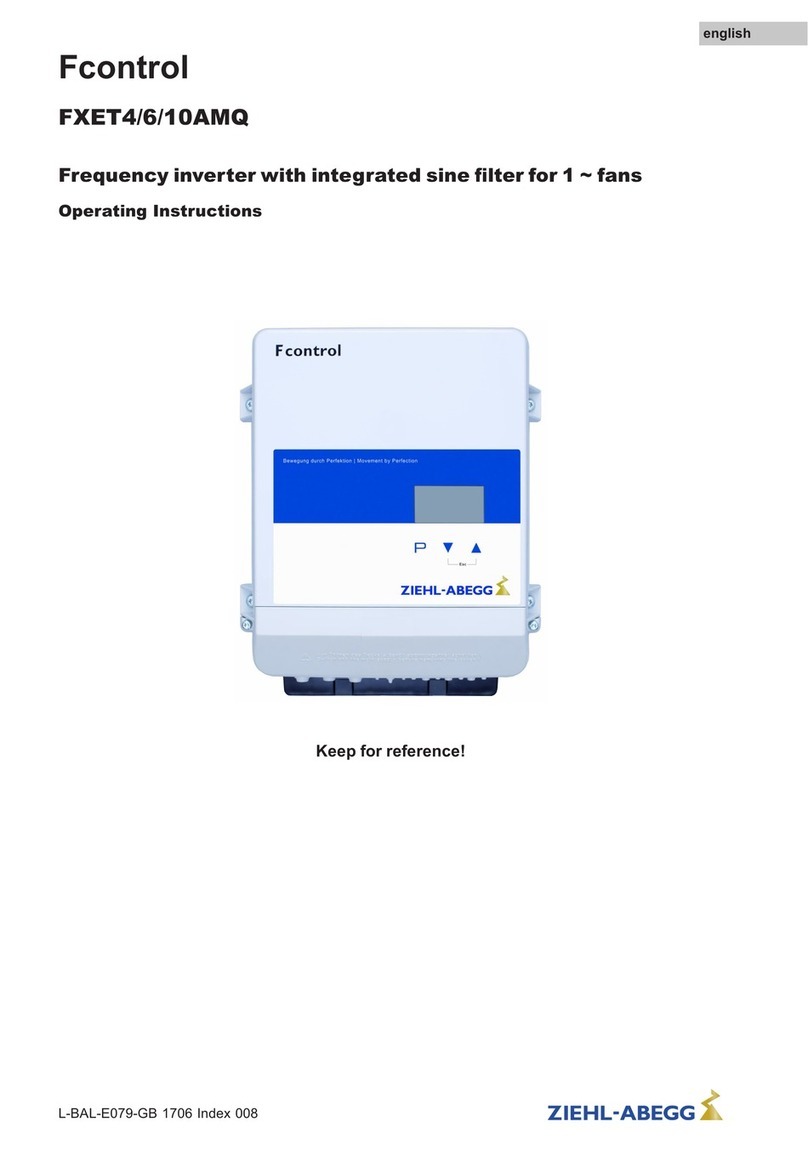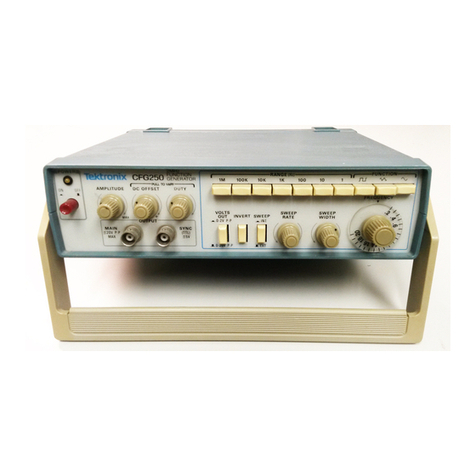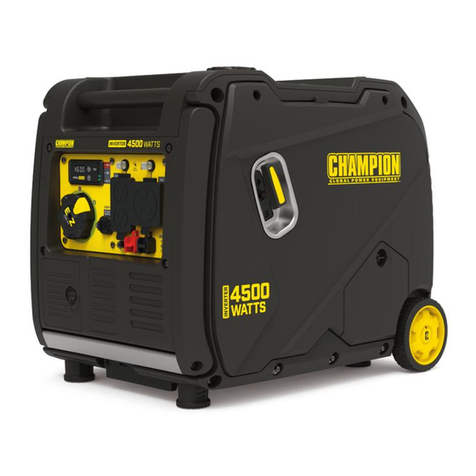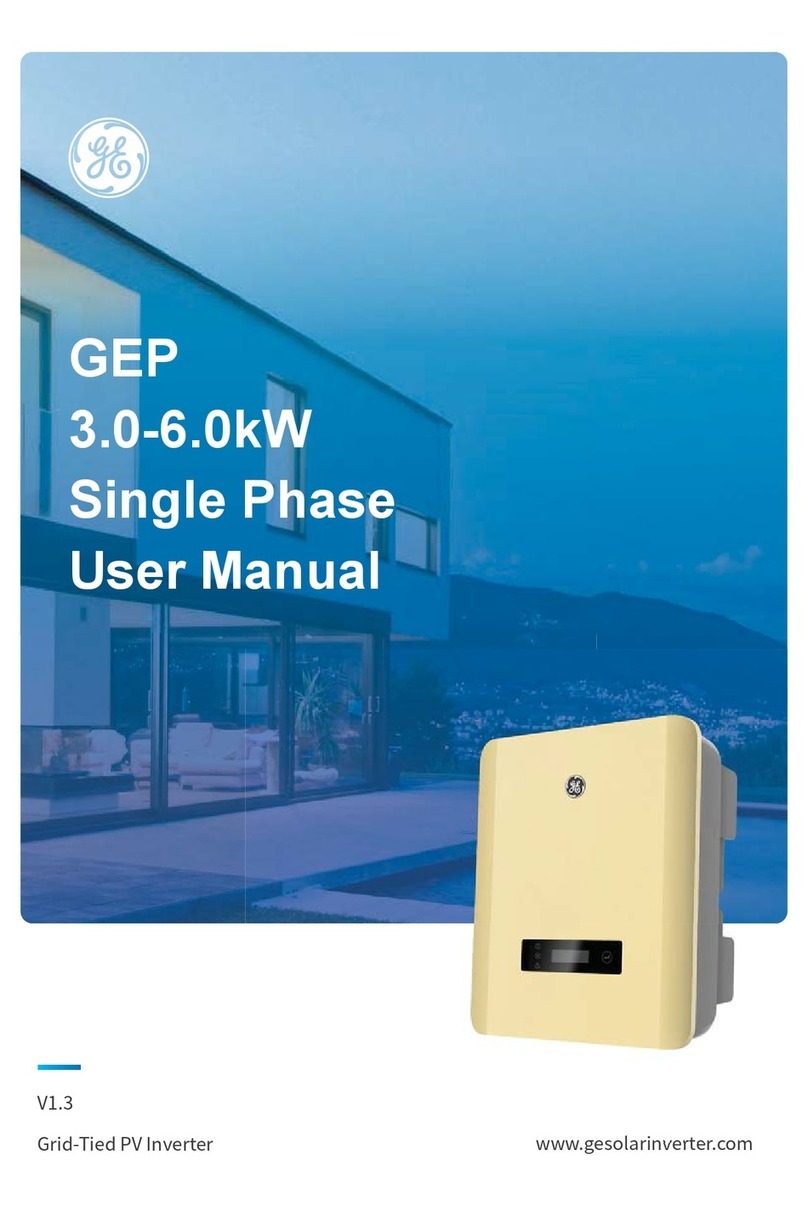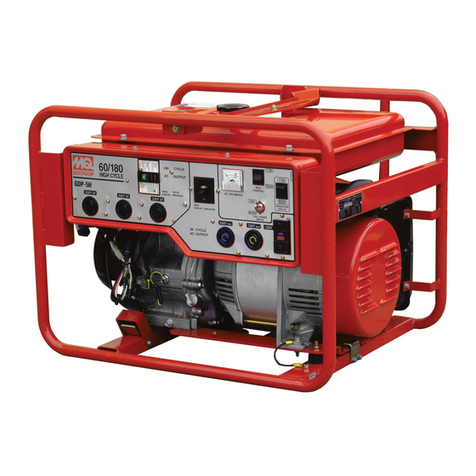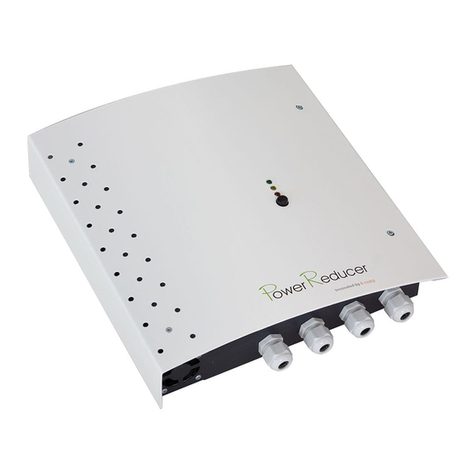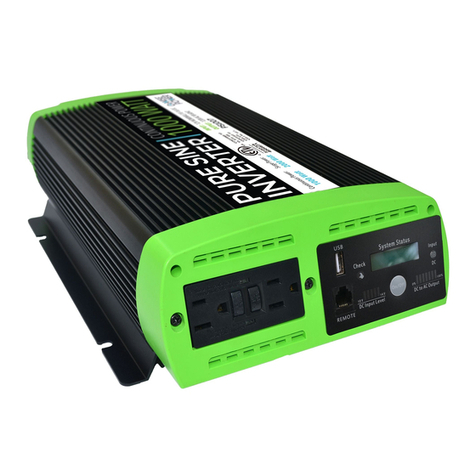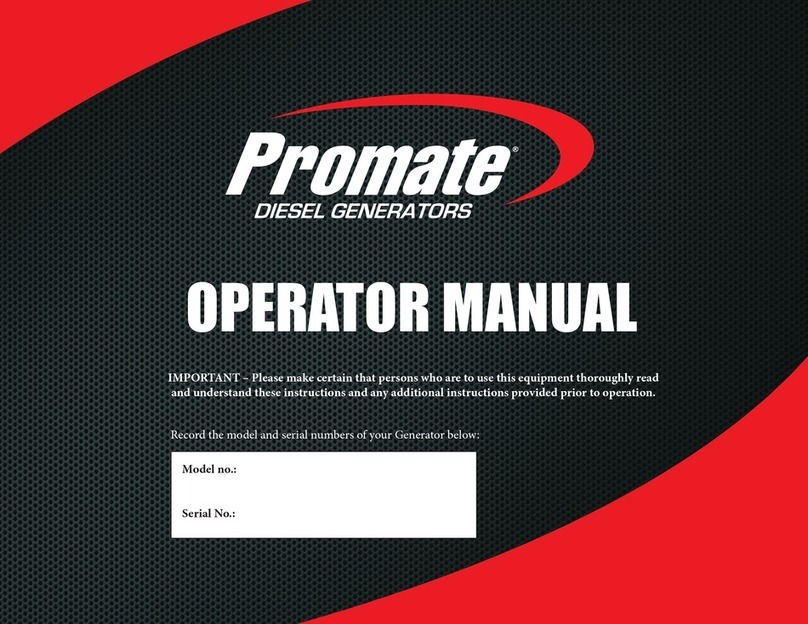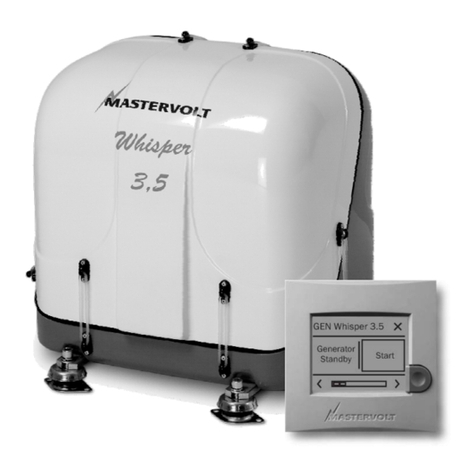Study these SAFETY RULES carefully before installing, operating or ser-
vicing this equipment. Become familiar with the Owner’s Manual and with
thegenerator. Thegeneratorcanoperatesafely, efficiently and reliablyonly
if it is properly installed, operated and maintained. Many accidents are
caused by failing to follow simple and fundamental rules or precautions.
Generaccannotpossiblyanticipateevery possiblecircumstancethatmight
involveahazard.ThewarningsinthisManualandontagsanddecalsaffixed
totheunit,aretherefore, not all-inclusive.Ifyou use a procedure,workmethod
or operating technique Generac does not specifically recommend, you
must satisfy yourself that it is safe for you and others. You must also make
sure the procedure, work method or operating technique that you choose
does not render the generator to be unsafe.
• For fire safety, the auxiliary generator must be installed and maintained
properly. Installation must always comply with applicablecodes,standards,
laws and regulations. Adhere strictly to local, state and national electri-
calandbuildingcodes. Comply with regulations the Occupational Safety
and Health Administration (OSHA) established. Also, the generator and
related components must be installed completely in conformance with
themanufacturer’s instructionsandrecommendations.Followingproper
installation, do nothing that might alter a safe installation and render the
unitinnon-compliancewithsuchcodes,standards,laws and regulations.
The Recreational Vehicle Generator produces extremely high and
dangerous electrical voltages and can cause dangerous, and possi-
blyfatal, electrical shock.Avoidcontactwithbarewires,terminals,etc.
while the unit is running. If you must work around an operating gen-
erator, stand on an insulated, dry surface to reduce shock hazard.
Never work on this equipment or handle any electrical device while
standing in water, while barefoot, or while hands or feet are wet. Dan-
gerous electrical shock will result.
• Have the generator properly grounded (bonded) during installation onto
the vehicle, either by solid mounting to the vehicle frame or chassis or
by means of an approved bonding conductor. DO NOT disconnect the
bonding conductor, if so equipped. DO NOT reconnect the bonding con-
ductortoanygeneratorpart that might be removedordisassembled during
routine maintenance. If the grounding conductor must be replaced, use
only a flexible conductor that is of No. 8 AWG copper wire minimum.
• Keep hands, feet, clothing, etc., away from drive belts, fans and other
moving parts of this equipment. Never remove any drive belt or fan
guards while the unit is operating.
• Inspect the generator periodically. Repair or replace all damaged or
defective parts immediately.
In case of accident caused by electric shock, shut down the source
ofelectrical poweratonce.Ifthiscannotbedone,freevictimfromlive
conductor. AVOID DIRECT CONTACT WITH THE VICTIM. Use a dry
board, dry rope, or other non-conducting implement to free the victim
from live conductor. If victim is unconscious, apply first aid and get
medical help
• Inspect fuel system frequently for leaks or damage. Repair or replace
any damaged or leaking component immediately. Never attempt to
change, alter or modify the generator fuel system in any way that might
affect safety or compliance with applicable codes and standards.
Thegeneratorenginegives off DEADLYcarbonmonoxide gas through
its exhaust system. This dangerous gas, if breathed in sufficient con-
centrations, can cause unconsciousness or even death. This exhaust
system must have been properly installed, in strict compliance with
applicable codes and standards. Following installation, you must do
nothingthatmightrenderthesystemunsafe or in non-compliance with
suchcodesandstandards.Thegeneratorcompartment must be com-
pletelyvaporsealedfromvehicle interior.Theremust be no possibility
of exhaust fumes entering the vehicle interior. Never operate this
equipment with a leaking or defective exhaust system.
• Never use the generator or any of its parts as a step. Stepping on the
unit can stress and break parts and may result in dangerous operating
conditions from leaking exhaust gases, fuel leakage, oil leakage, etc.
• Do not smoke around the generator. Wipe up any fuel or oil spills imme-
diately.Neverleave oily or fuel soakedragsinthegeneratorcompartment
or on the generator itself. Keep the area around the generator clean and
free of debris.
• Adequateventilationisrequiredtoexpeltoxic fumes and fuel vaporsfrom
the generator compartment. Do not alter the installation of this equip-
mentinanymannerthatmightobstructairandventilationopenings. Such
openings must be kept clear and unobstructed.
Somegeneratorsmay use LP gas (propane) as a fuel. LP gas is highly
EXPLOSIVE. The gas is heavier than air and tends to settle in low
areas where even the slightest spark can ignite the gas and cause an
explosion.
• Before performing any maintenance on the generator set, disconnect its
battery cables to prevent accidental start up. Disconnect the cable from
the battery post indicated by a NEGATIVE, NEG or (–) first. Reconnect
that cable last.
2
Recreational Vehicle Generator
Generac NP-50LPG Recreational Vehicle Generator
THE MANUFACTURER SUGGESTS THAT THESE “RULES” FOR SAFE OPERATION BE COPIED AND POSTED IN
POTENTIAL HAZARD AREAS OF THE RECREATIONAL VEHICLE. SAFETY SHOULD BE STRESSED TO ALL
OPERATORS AND POTENTIAL OPERATORS OF THIS EQUIPMENT.
The engine exhaust from this product
contains chemicals known to the State
of California to cause cancer, birth
defects, or other reproductive harm.
WWAARRNNIINNGG::
GENERAC®
CORPORATION

